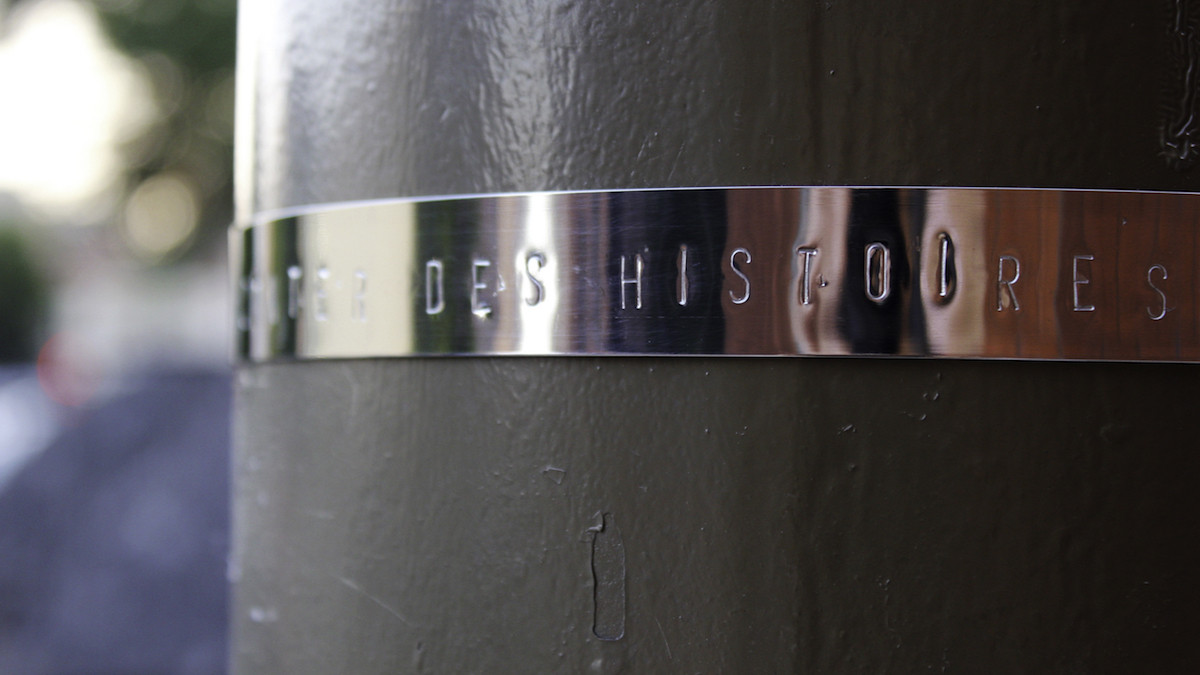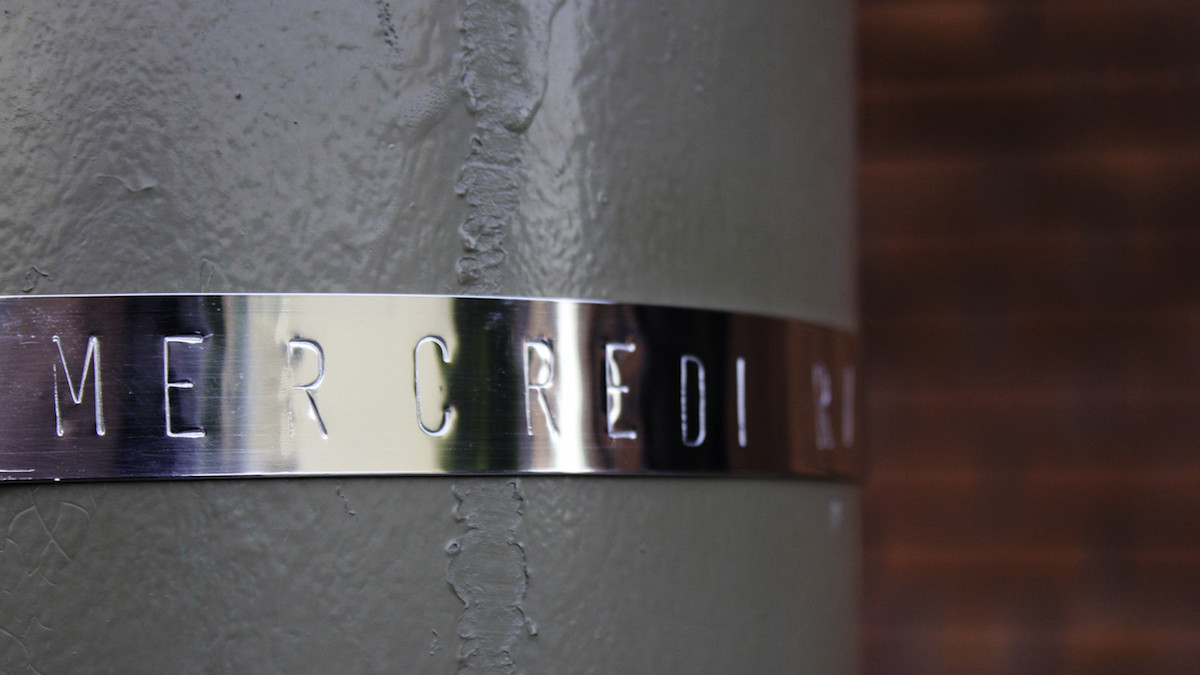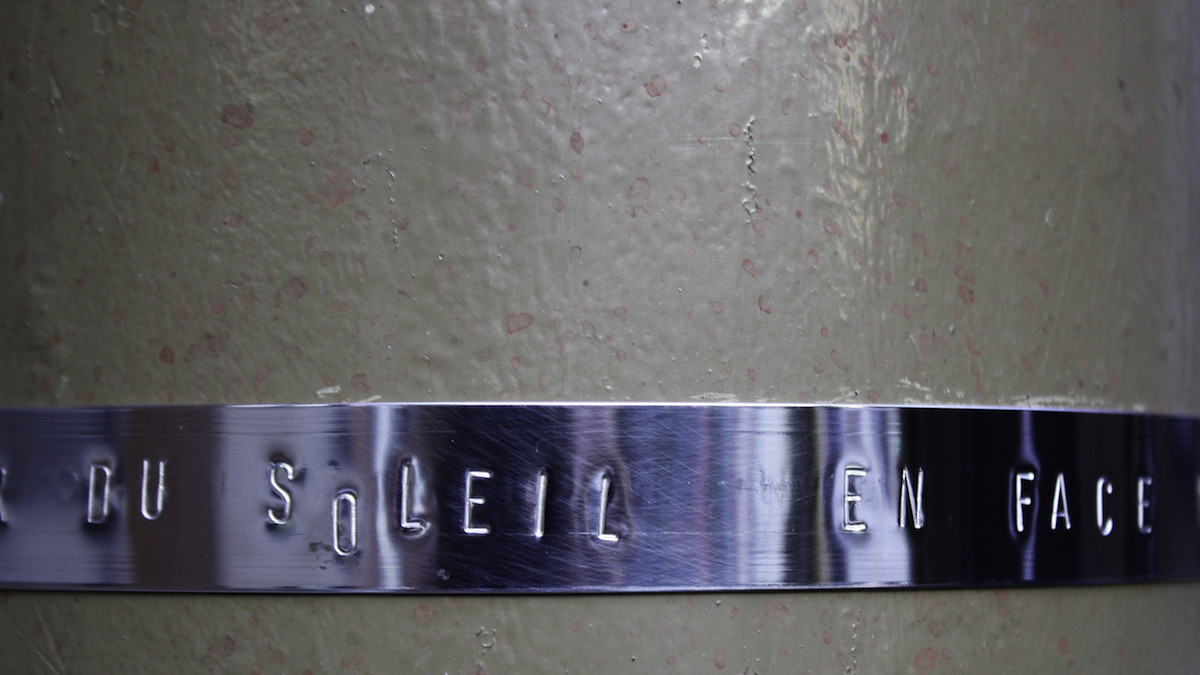


CLUES TO SOMETHING ON THE CUSP OF DISAPPEARING
Permis10h57 is an in situ work by Montreal artist Gilbert Boyer, whose subject and object are both the urban fabric and the pedestrians who walk through it.
Blending in, chameleon-like, with existing urban structures, while adopting their language, this work consists of fragments of poetry, discreetly displayed on 50 or so lampposts. These short sentences, ephemeral thought bubbles that surface in the mind as we move through the city, invite passersby to indulge in daydreams and introspection. In retranscribing these words on metal rings that encircle the lampposts, the artist has used so light a touch that the sentences appear, at times, to be incomplete or discontinuous. Challenging the limits of perception, these furtive reflections will be noticed by only the most perspicacious viewer: “Very few individuals will see them, flâneurs, people who are receptive and observant,” says Boyer, who takes a deliberately anti-spectacular approach.
Permis10h57 is addressed to walkers, passersby and dreamers, within a perimeter at the centre of which is the Fonderie Darling, where the Ville de Montréal’s Fleuve-Montagne project goes off course, branching out. This work also pays homage to Panique au Faubourg (1997), a cultural event in which Boyer participated and which marked the beginnings of Quartier Éphemère, the organization that established the Fonderie Darling.
One group of texts revisits Boyer’s earlier installation, Collets de survie (1997), certain elements of which still exist, some painted over by unwitting municipal employees, further increasing their invisibility. To cite just a few: PERMIS DE DÉCOUVRIR MA VILLE COMME SI ELLE ÉTAIT UNE ÉTRANGÈRE (It is permitted to explore my city as if it were a foreigner); PERMIS DE PENSER TOUT HAUT CE QUE JE DIS TOUS BAS (It is permitted to say out loud what I mutter under my breath); PERMIS DE PRENDRE LE TEMPS DANS MES BRAS (It is permitted to take Time in my arms). These “permits” are at odds with the traffic signs that dictate Montreal’s parking regulations and that tend to prohibit much more than they permit.
The second group stems from a new concept, through which Boyer seeks to provoke a virtual dislocation, inviting viewers to mentally project themselves onto another area of the city: PAR HIBERNIA, SOUS LA VOIE FERRÉE / AU BOUT WELLINGTON / LE PARC / TU TOURNES À DROITE DES-FILLES-DU-ROY, C’EST LÀ (Take Hibernia / under the train tracks / at the end of Wellington / at the park / you turn right on Des-Filles-Du-Roy, it’s there); MERCREDI RV AU PARC LAFONTAINE À 6 H BEAU PAS BEAU (Wednesday meet at Parc Lafontaine 6 a.m. rain or shine); ST-ANTOINE OÙ SE TROUVAIT LE TERMINUS CRAIG J’IMAGINE SENTIR LA RIVIÈRE COULER (St-Antoine where the Craig Terminus stood, I imagine feeling the river flow). Boyer prods us to stir up memories that are visual and personal, and associated with the places he evokes.
This subtle intertwining of space and time, the change in scale that runs counter to mega-installations, remind us that the very essence of art is, at times, evident in the near-invisible, revealing to the viewer clues that point the way to something on the cusp of disappearing.
- Text by Caroline Andrieux

Curator
Caroline Andrieux
